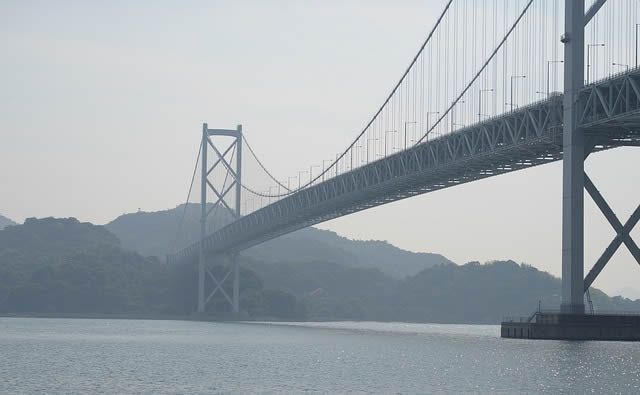昨日から「Japan’s little-known seafaring past -「日本の知られざる海運の歴史」を読んでいます。

・「日本の知られざる海運の歴史」(1)
Today, the Shimanami Kaido stops along busy fishing ports, valleys terraced with farming villages and lemon and mikan tangerine orchards – and even culinary gems like the sushi restaurant Akakichi, which the Michelin Guide highlights as one of the most remote stars in its constellation of restaurants.
現在、しまなみ海道は、賑やかな漁港、段々畑の農村、レモンやみかんの果樹園、そしてミシュランガイドで最も遠い場所にある星付き飲食店、寿司屋「あか吉」のような食の宝庫を経由している。
The route is also a journey into Japan’s little-known seafaring past.
また、このルートは日本の知られざる海運の歴史を知る旅でもある。
From the 9th Century to the end of the 16th Century, the Geiyo Islands were home to pirates (kaizoku).
9世紀から16世紀末にかけて、芸予諸島は海賊の本拠地だった。
These were seafaring clans who, by virtue of their skill at navigating dangerous waters, dominated the sea lanes of the Seto Inland Sea
瀬戸内海の海路を支配し、危険な海を切り抜ける技術を持った海人族、
- and terrorised the coasts of East Asia, raiding, trading and fighting battles.
そして東アジアの沿岸を恐怖に陥れ、略奪、交易、戦闘を繰り返した。
In recent years, a new appreciation of the pirates has been popularised in Japan, in part thanks to historian and television presenter Junko Yamada.
近年、日本では時代考証家でテレビ司会者の山田順子さんの活躍もあり、海賊に対する新しい認識が広まっている。
Her book Kaizoku Ga Tsukutta Nihonshi (Japan’s History Made by Pirates), published in 2017, describes the pirates as “heroes of the sea” because of the important part they played in major turning points of the country’s island-nation history.
2017年に出版された彼女の著書「海賊がつくった日本史」では、海賊が島国日本の歴史の大きな転換点に重要な役割を果たしたことから、彼らを「海の英雄」と表している。
水泳も含めて、水をうまく扱う技術がある人は、本当に尊敬します。
いざという時、その技術がある人は生き残り、ない人は・・・というくらい、結構重要な能力だと思います。
皇族の方々が通われる学習院では3㎞の遠泳を行うそうですが、これも精神鍛錬、そして生き残る技術として必要だからかなという気がします。
私は息継ぎが下手で、背泳ぎならば何とか25mというレベル、これでは話になりませんよね(汗)。
理由は単純明快!「少ないコストでしっかり楽しく学べるから」。
私自身の経験(高機能でビックリ)をびっしり書いていますので、良かったら読んでみてください。
下のバナーからどうぞ!






